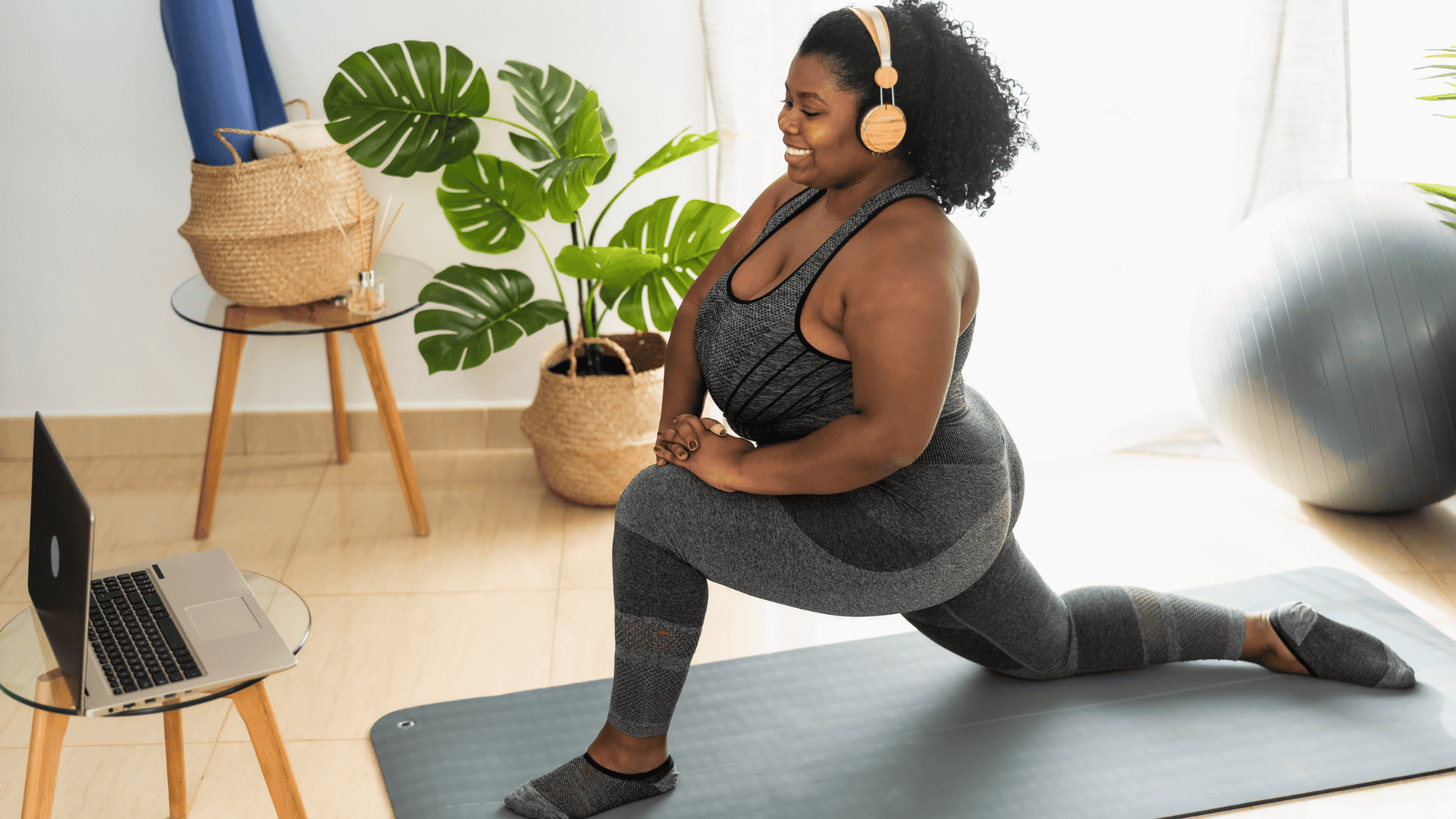Trying to burn fat without a gym membership? You can.
In fact, with the right mix of movement, rest, and structure, at-home workouts can be just as effective as any gym session.
Whether you’re using your living room, bedroom, or a small space in the garage, all you need is a clear plan that combines solid bodyweight exercises, steady effort, and short bursts of intensity.
This guide gives you a 5-day fat loss workout plan you can follow from home. Each workout is simple, direct, and designed to help your body burn fat, not just during the session, but for hours after.
And yes, it includes rest and recovery so you don’t burn out halfway through the week.
Let’s start by understanding what actually makes a home workout plan effective for fat loss.
Can You Really Lose Fat At Home Without A Gym?
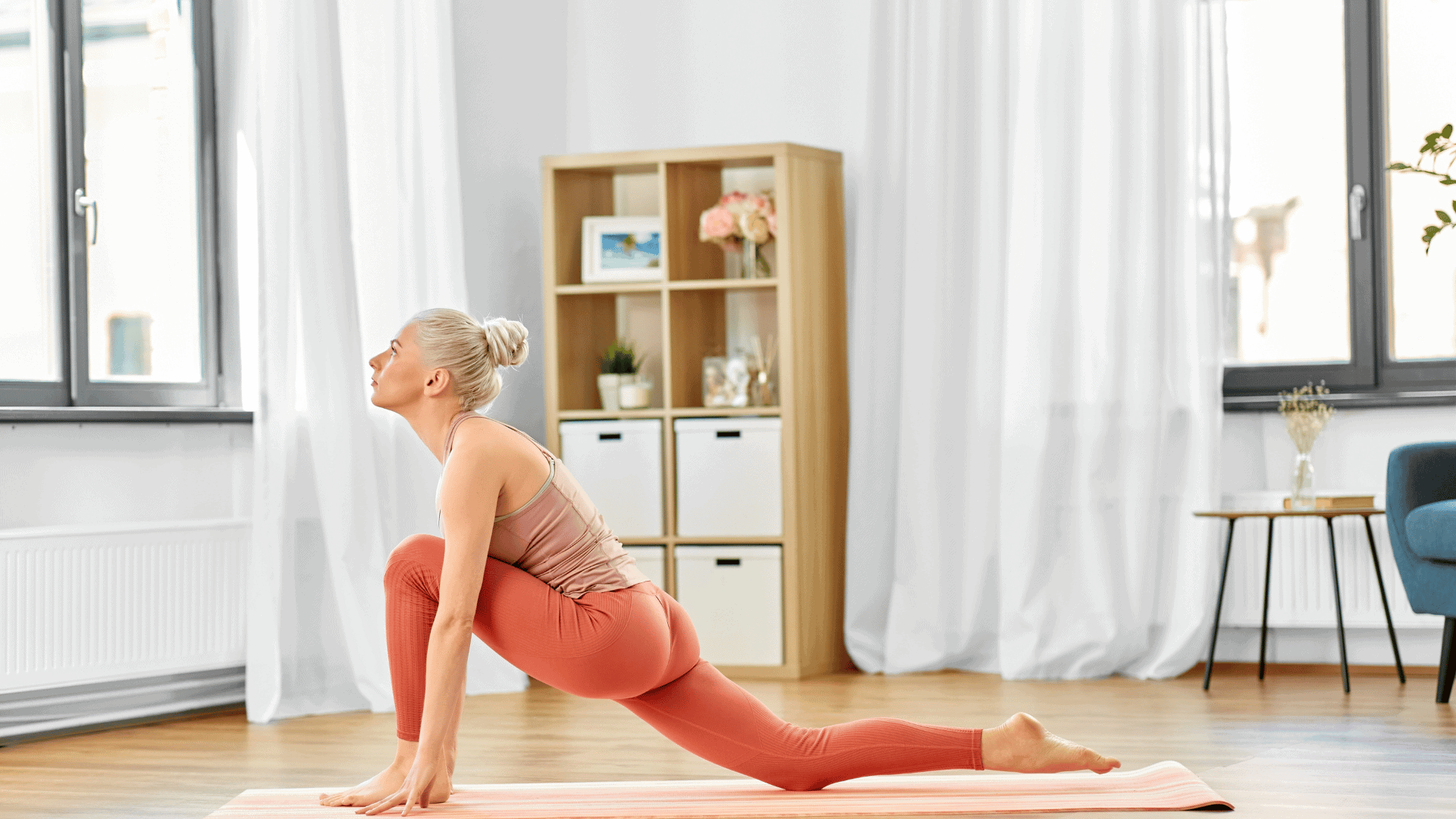
The short answer is YES.
You don’t need machines or heavy equipment to get results, you just need a plan that actually makes your body work.
Fat loss comes down to two main things: movement and consistency. And home workouts check both boxes when done right.
With bodyweight exercises, you can build strength, raise your heart rate, and burn calories using nothing but the space around you. Add in a steady pace and structured rest, and your body starts using fat for fuel.
Plus, working out at home saves time.
You’re in control of when you move, what pace you go at, and how often you repeat each workout.
That kind of control makes it easier to stay on track (especially on busy days when the gym just isn’t happening).
But not all workouts help with fat loss.
For a plan to work, it needs to mix cardio (to raise your heart rate), strength (to build muscle and burn more calories at rest), and recovery (so your body can rebuild and come back stronger).
Random moves and back-to-back workouts with no break might leave you burned out instead of burned in.
This is where structure matters.
A solid fat loss workout plan should build up slowly, push your body just enough, and give you enough recovery to actually keep going. The goal isn’t to go all out every day. It’s to move smart, stay consistent, and give your body time to respond.
And the best part?
You can do all of this from the comfort of your own home.
Your 5-Day Fat Loss Workout Plan at Home (With Schedule)

If you want to lose fat at home, you need more than random workouts. What you need is a weekly plan that blends strength, cardio, and recovery in a way that keeps your body moving without wearing you out.
This 5-day routine is designed to hit all the right zones.
Some days focus on full-body strength to help build lean muscle. Other days include cardio bursts to keep your heart rate up and boost your calorie burn. And of course, there’s space for recovery, so your body can rest, rebuild, and come back stronger.
Each workout can be done in about 25–40 minutes, depending on your pace. You don’t need any fancy equipment, just your body, a little space, and a plan that tells you what to do.
Here’s how your week could look:
| Day | Workout Focus | What It Does | Optional Swap |
| Monday | Full-Body Strength (Bodyweight) | Builds lean muscle, boosts metabolism | Use light dumbbells if you want more challenge |
| Tuesday | Low-Impact Cardio Circuit | Burns calories, keeps it joint-friendly | Swap in dance or shadow boxing for variety |
| Wednesday | Active Recovery (Mobility + Core) | Reduces soreness, improves posture and control | Go for a light walk if you’re extra sore |
| Thursday | Cardio + Strength Combo | Raises heart rate and builds strength at the same time | Adjust intensity based on your energy |
| Friday | Quick Burn: HIIT Style (15–20 minutes) | Short, intense workout to tap into fat stores fast | Make it low-impact if you’re new to HIIT |
| Weekend | Optional Rest or Light Movement | Let your body recover or go for a walk or stretch session | A good stretch video counts too |
You can shift the days to fit your schedule, but try to keep the flow: strength, cardio, recovery, combinations, and a shorter push at the end of the week.
This setup keeps things fresh, easy to follow, and doable no matter your fitness level.
But, What Would Each Day Look Like With This Fat Loss Workout Plan?
You’ve got the weekly plan. Now let’s break down what each day actually looks like.
Every workout here uses bodyweight-only moves you can do in a small space, with no equipment needed. Each one is designed to help you burn fat, build strength, and stay consistent.
Below, you’ll find the moves, how long you have to do them, how long do you need to rest, and tips for making them easier or harder depending on your level.
Day 1: Full-Body Strength (Bodyweight)
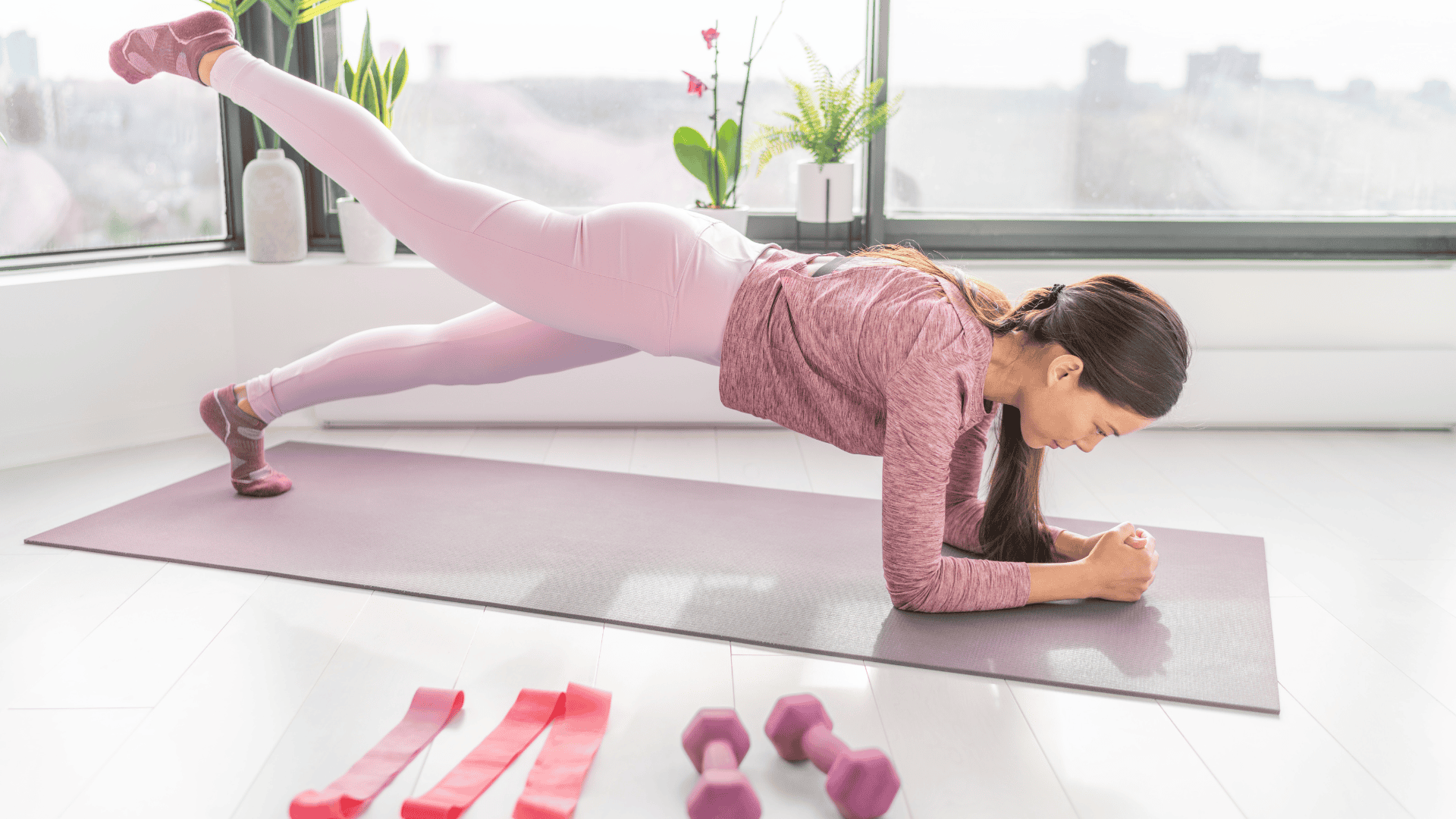
Goal: Build lean muscle to support fat loss
How to do it:
- Do each move for 40 seconds
- Rest 20 seconds between moves
- Complete 3 rounds total
- Rest 1–2 minutes between rounds
Moves:
- Bodyweight Squats – Feet shoulder-width apart. Lower with control, stand tall.
- Incline Push-Ups – Hands on a bench or couch. Lower chest, push back up.
- Glute Bridges – Lie on your back, press through heels, lift hips.
- Dead Bug – Lie on back, arms up, knees bent. Lower opposite arm/leg slowly.
- Wall Sit (Hold) – Back flat against the wall, knees bent at 90 degrees. Hold still.
Optional Boost: Swap regular squats for jump squats if you want more burn.
Day 2: Low-Impact Cardio Circuit
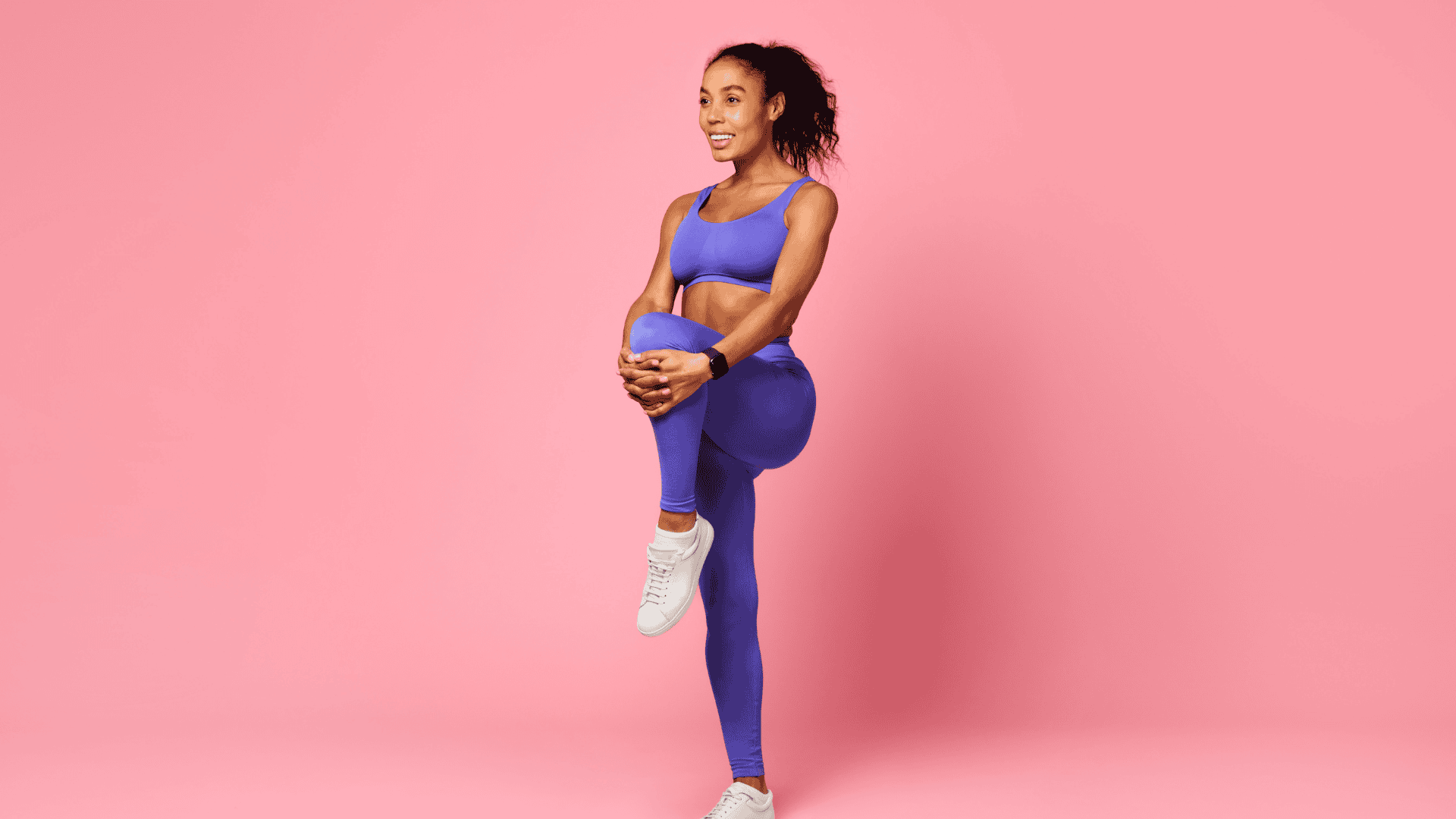
Goal: Raise heart rate without high impact
How to do it:
- Do each move for 30 seconds
- Rest 15 seconds between moves
- Repeat the full set 4 times
Moves:
- Step Touch with Arm Swings – Step side-to-side, swing arms overhead.
- Knee Drives – Stand tall, drive one knee up quickly, switch.
- March in Place – Pump arms, lift knees high.
- Modified Jumping Jacks – Step one leg out at a time, swing arms like a jack.
- High Reach + Toe Tap – Reach both hands up, then bend and tap toes.
Optional Boost: Add light ankle weights or speed up your pace.
Day 3: Active Recovery + Core
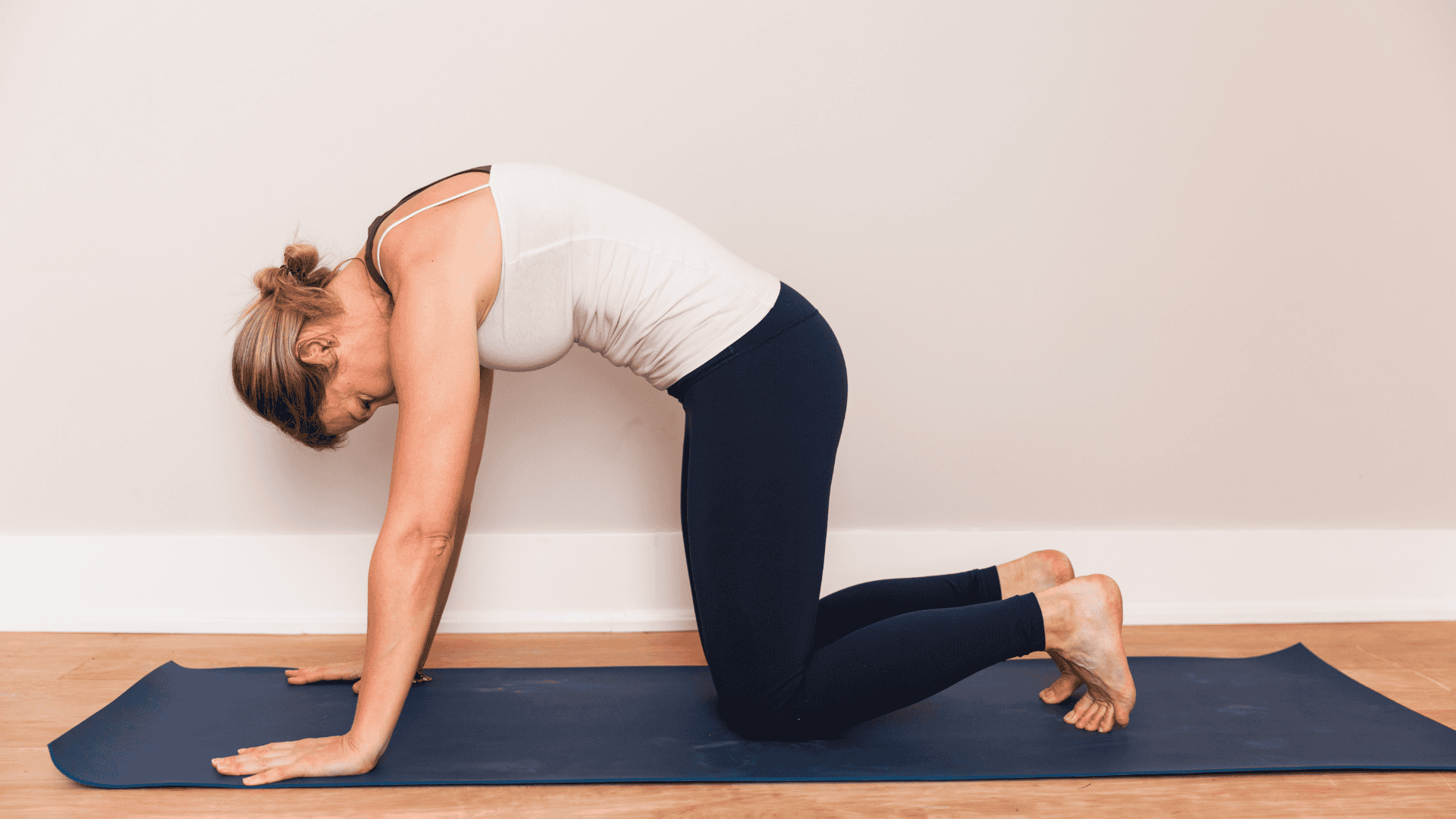
Goal: Help your body recover while still moving
How to do it:
- Do each move slowly and with control
- 30–45 seconds per move, rest as needed
- Complete 2–3 rounds
Moves:
- Cat-Cow Stretch – On all fours, arch and round your back gently
- Hip Circles – Standing, rotate hips slowly in both directions
- Bird Dog Hold – On all fours, extend opposite arm/leg, hold
- Side-Lying Leg Lifts – Lie on your side, lift and lower top leg
- Seated Twist Stretch – Sit cross-legged, twist gently to one side
Optional Boost: Add a 10-minute walk afterward if you want to keep moving.
Day 4: Cardio + Strength Combo
Goal: Burn calories and build muscle in one session
How to do it:
- Do each move for 40 seconds
- Rest 20 seconds between moves
- 3–4 rounds total
Moves:
- Reverse Lunge to Knee Drive – Step back into a lunge, then drive knee up
- Push-Up to Shoulder Tap – Do one push-up, then tap opposite shoulders
- Squat Pulse + Stand – Do 3 small pulses at the bottom, then stand up
- Plank Walkout – Stand, walk hands out to plank, then back
- High Knees (or March Fast) – Lift knees quickly, keep arms moving
Optional Boost: Try light dumbbells for lunges or squats if available.
Day 5: Quick Burn (15–20 Minutes HIIT)
Goal: Short, sharp workout to finish the week strong
How to do it:
- 30 seconds work, 15 seconds rest
- 2 moves per round, repeat 4–5 times
- Rest 1 minute between rounds
Round 1:
- Jump Squats
- Plank Hold
Round 2:
- High Knees
- Mountain Climbers
Round 3:
- Push-Ups
- Side Plank (Left)
Round 4:
- Jumping Jacks
- Side Plank (Right)
Optional Swap: Turn jump squats into regular squats or plank holds into knee-down planks if needed.
This setup gives you just the right amount of challenge each day.
And with this, you’re not guessing what to do, and you’re not repeating the same routine. It’s structured, flexible, and designed to help you move forward, one day at a time.
How to Know You’re in the Fat-Burning Zone at Home?
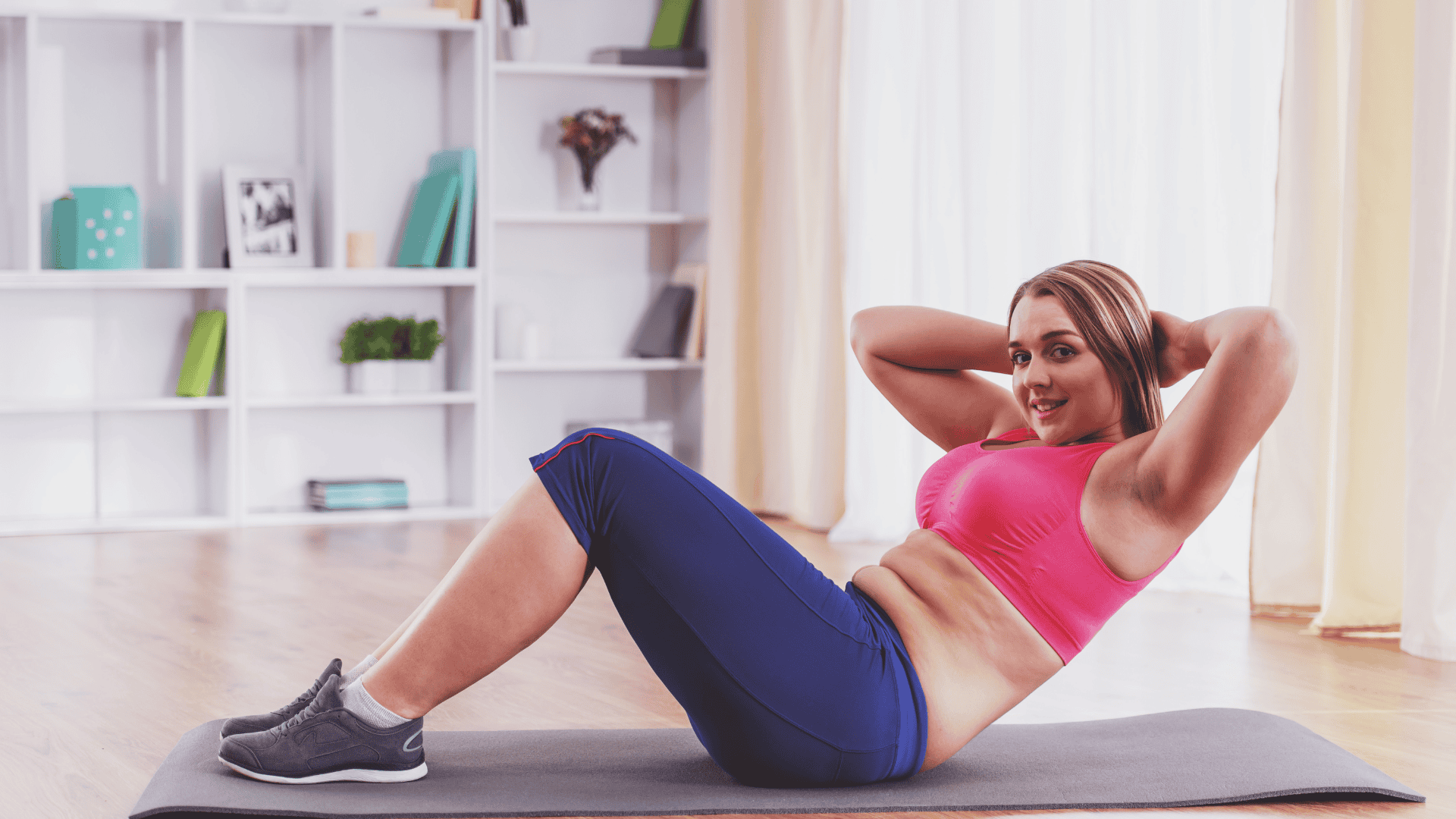
To determine whether you’re already in a fat-burning zone or not (even at home) start by checking how your body responds during the workout.
A good way to check is the talk test.
If you’re working out and can talk, but wouldn’t want to hold a full conversation, you’re likely in the right zone. It should feel challenging, but not exhausting.
(You want to be a little out of breath, not gasping)
Rather than worrying about speed or counting reps, pay attention to how your body feels. Look for signs like:
- Are you moving with purpose?
- Is your heart beating faster than usual?
- Do you feel warm or lightly sweaty?
If those answers are yes, then you’re likely where you need to be.
Think of it like this:
- Too easy: You can sing or scroll your phone. Not much is happening.
- Just right: You can talk, but not easily. This is the fat-burning zone.
- Too hard: You’re gasping or need to stop often. That shifts into high-intensity work, which uses more sugar than fat.
Some days will feel stronger than others. That’s normal. The goal is to stay steady, keep showing up, and let your effort build over time.
What to Eat Before and After Your Workouts at Home
The food that you eat before and after your workouts plays a big role in how you feel and how your body burns fat.
The right food gives you energy to move, helps your muscles recover, and supports fat loss, even when you’re working out at home.
What to eat before your workout

You don’t need a big meal before you exercise, especially if you’re working out at home. In fact, eating too much can leave you feeling sluggish.
Instead, keep it light and simple.
Try these easy options about 30 to 60 minutes before your workout:
- Half a banana with a spoonful of peanut butter
- A slice of toast with a little almond butter
- Greek yogurt with a few berries
- A small smoothie with fruit and a little protein powder
These snacks give your body quick energy so you can move without feeling drained.
What to eat after your workout

Once you’re done, your body needs a mix of protein and carbs to recover and rebuild. This helps protect your muscles and supports fat loss at the same time.
Here are some post-workout meals and snacks that are easy to put together:
- Scrambled eggs with whole-grain toast
- A smoothie with banana, protein powder, and almond milk
- Plain Greek yogurt with honey and fruit
- Chicken or tofu with brown rice and veggies (if it’s around mealtime)
If you’re working out in the morning, just match your food to the time of day. A light snack before, then breakfast after.
But if you’re doing exercise in the afternoon, you should plan your meals around it so you’re not running on empty or overeating after.
Just always remember to keep it simple. You don’t need to count every bite, just give your body steady fuel and let your workouts do the rest.
How to Stay Motivated When Working Out at Home
Sticking to your workouts at home sounds easy, until the couch feels more inviting or your day gets busy.
That’s why motivation at home isn’t about hype. It’s about building small habits that actually fit into your routine.
Create a Space That Helps You Stay Focused
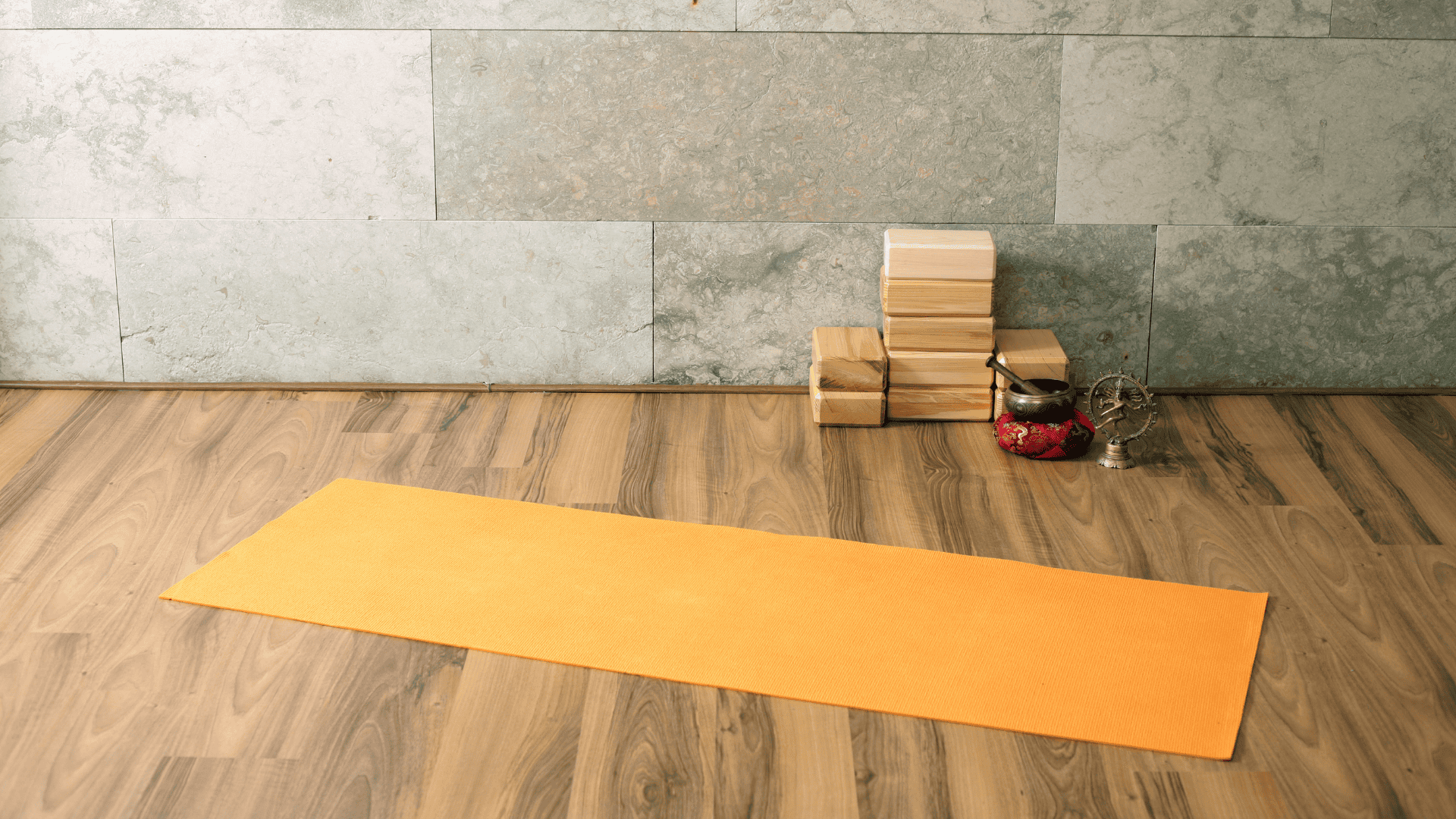
Having a spot that’s ready for movement makes it easier to get started.
Whether it’s a corner in your room, a section of your living room, or even just a yoga mat near a window, the space should feel clear and calm.
Keep your gear (like a water bottle or resistance bands) within reach so you don’t lose time getting set up.
Build It Into a Routine You Already Have
It’s easier to stay consistent when you tie your workout to something you already do. Right after you brush your teeth, roll out your mat.
After your morning coffee, press play on your workout playlist. These little links turn a workout from something you “have to remember” into something you just do.
Keep Track of the Progress You Can Feel
Motivation grows when you notice progress, even in small ways.
Maybe you got through one more round than last time. Maybe your breathing felt smoother, or your core felt more stable.
Write down one thing after each session that felt better than the day before. That quick note can remind you why it’s worth coming back again tomorrow.
Common Mistakes That Slow Down Fat Loss at Home
YES I agree, doing fat burning workouts at home is effective, but if you’re not seeing results, the problem usually isn’t effort. It often comes from small mistakes that build up over time and make fat loss harder than it needs to be.
One common mistake is skipping rest or going too hard every day.
When your body doesn’t get time to recover, it holds on to stress. That stress can make it harder to lose fat, even if you’re working out daily.
Rest days are not wasted days—they give your muscles time to rebuild so you can come back stronger.
Another issue is not having a plan.
Doing random workouts might help you break a sweat, but without structure, it’s harder to stay on track.
A clear plan helps balance strength, cardio, and recovery so your body can keep burning fat without feeling worn out.
And it’s not just about the workouts. If you’re not eating well or getting enough sleep, your body won’t respond the way you want it to.
Skipping meals, eating mostly snacks, or sleeping less than 7 hours a night can slow everything down.
Fat loss becomes easier when you follow a routine, rest when needed, and give your body good food and enough sleep.
These basics build a strong foundation, and they make everything else work better.
Stay Consistent, and the Results Will Follow
Building a fat loss plan at home doesn’t need to feel overwhelming. With a small space, your own bodyweight, and a clear weekly routine, you already have what you need to make real progress.
But here’s the thing…
Results come from consistency, not perfection. Some days will feel easier than others. That’s normal.
What matters is that you keep showing up, even when you’re not feeling 100%.
Instead of focusing only on the scale, look for signs of progress you can feel.
Are your legs getting stronger?
Is your balance improving?
Do you have more energy during the day?
These small changes show that your body is adjusting and getting better with each session.
Over time, these wins add up. You’ll notice changes in how your clothes fit, how easily you move, and how confident you feel after each workout.
So keep the plan simple. Stick to the routine. Be patient with your body, and give it time to respond.
When you stay consistent, the results will come.
Stay on Track With Your Fat Loss Goals

You’ve just gone through a full 5 day fat loss workout plan at home. Following a structured routine is the best way to keep momentum, but sometimes it’s hard to stay consistent without a clear schedule to guide you.
That’s why we created the Weekly Workout Schedule. It’s simple, flexible, and helps you plan your workouts so you never have to guess what to do next
Frequently Asked Questions
1. Can I really lose fat at home without a gym?
Yes, you can. Fat loss doesn’t depend on fancy machines or a gym membership. What matters most is how consistently you move your body, challenge your muscles, and stay active. Bodyweight workouts, when done regularly and with good effort, can help you burn calories, build strength, and improve your metabolism, all from your living room.
2. How many days a week should I work out to lose fat?
For most people, 4 to 5 days a week works well. That gives your body enough activity to burn fat while still leaving time to rest and recover. If you’re just starting out, 3 days is a good place to begin. Then, as you build the habit, you can add in more sessions or increase the intensity.
3. Do I need to do both cardio and strength at home?
Yes, a mix of both is ideal. Cardio helps burn calories and keeps your heart healthy, while strength training builds lean muscle, which helps your body burn more fat even at rest. That’s why this plan combines both, so you get the best of both worlds every week.
4. What if I don’t feel sore after a workout? Does that mean it didn’t work?
Not feeling sore doesn’t mean your workout wasn’t effective. Soreness is just one sign your muscles are adjusting to new movements. What matters more is how steady and strong you feel during the workout. If you’re moving with control, getting your heart rate up, and finishing with energy (not exhaustion), you’re on the right track.
5. How soon will I see results with a home workout plan?
It depends on your consistency, sleep, and what you eat. But most people start to feel stronger, more energized, and less winded within 2 to 3 weeks. Visible changes, like clothes fitting differently or inches lost, often show up within 4 to 8 weeks. Just keep showing up, and the results will come.
